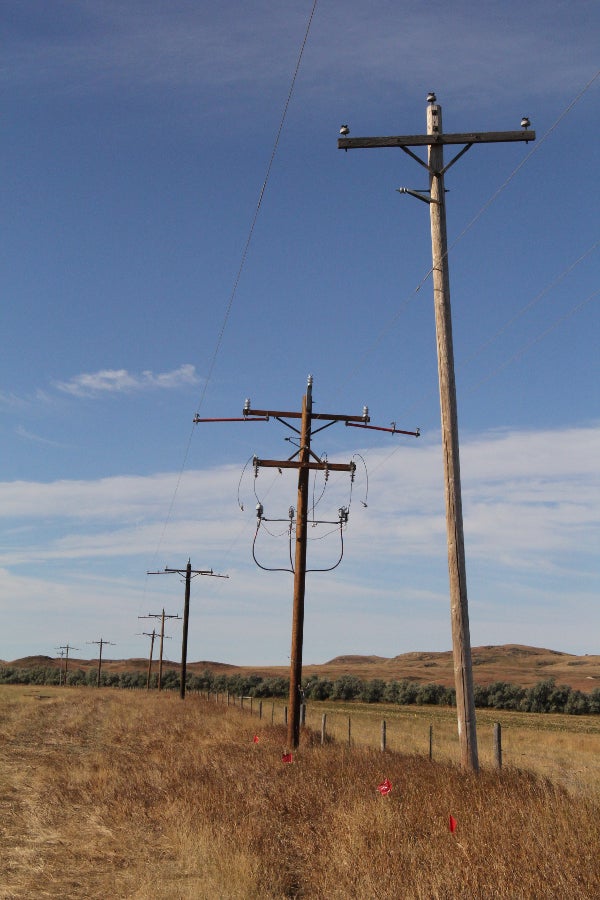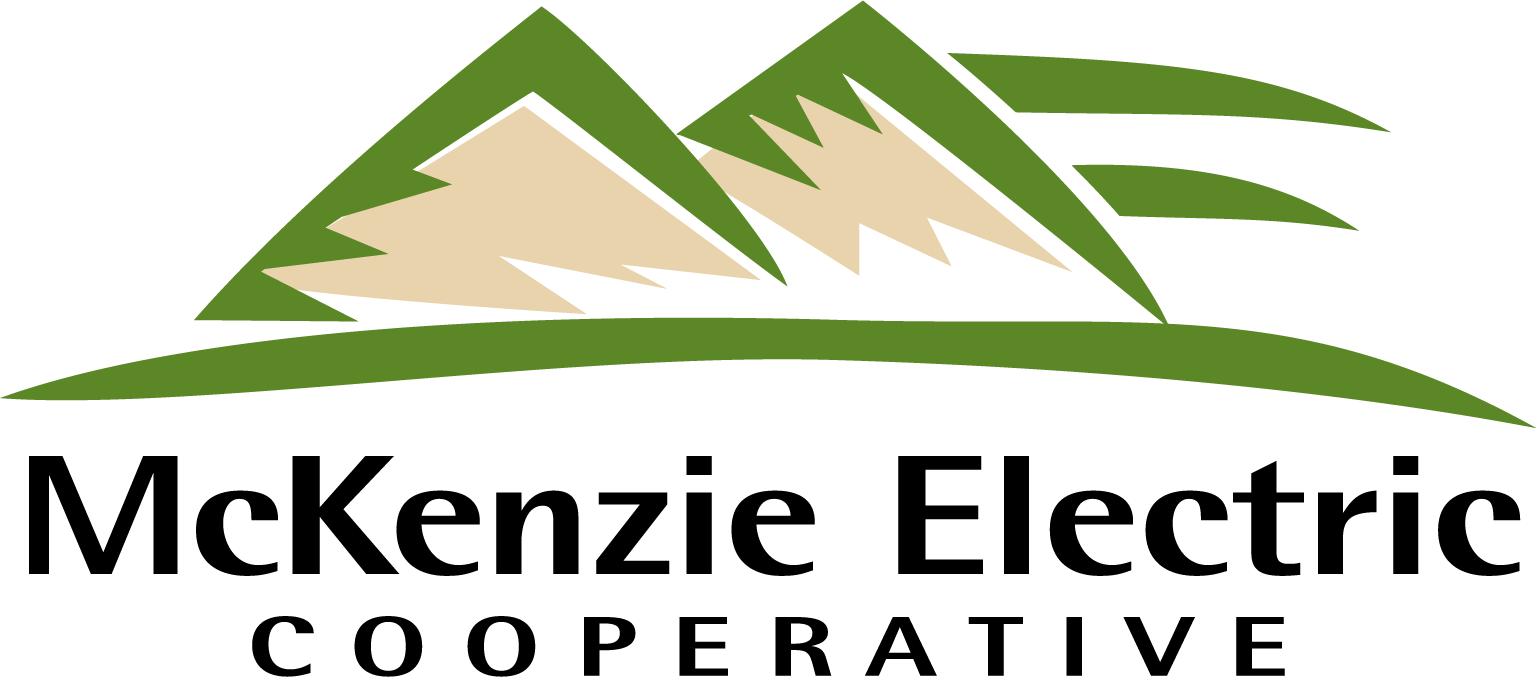New year, new improvements
And update on your cooperative
Are you planning spring-time improvements? A new, year-long project you hope to start soon? If that’s you, you’re not alone! McKenzie Electric (MEC) takes great pride in offering our members a quality service they can count on. In keeping true with that statement, MEC will be making upgrades and expansions throughout the year to accommodate system growth and improve our service.
One of the main priorities in keeping MEC’s system reliable is scheduled maintenance on components of power delivery such as poles, electrical lines, and transformers. With over 2,700 miles of overhead lines and roughly 1,300 miles of underground, making sure every line is operating as is should is no small task. Here are a few ways your cooperative takes a proactive approach to system maintenance:
Pole Testing – Approximately 10% of MEC’s system, or around 6500 poles, is tested yearly to avoid potential outages caused by failed poles and equipment. Most of the poles MEC uses are Douglas Fir pine poles that are weather-treated to help resist the elements. Even with this treatment, poles are susceptible to rot and damage from multiple sources including animals and storms. Testing is completed by taking core samples, performing knock tests and visual inspections, and is then reported to our engineering staff at the end of the year. If a pole is identified as needing immediate attention, they are reported and fixed as soon as possible by line crews or contractors. Unless a planned outage is required for safety, these pole changeouts can take place without our members seeing any outage time.
Substation Maintenance – At the heart of every distribution system are substations. MEC has a total of 64 individual yards which hold 90 transformers that are tested and inspected every month for potential faults in hardware or software. Jacob Omdalen, MEC Power Engineer, coordinates these efforts with substation technicians to ensure our substations are operating to the best of their abilities. Since transmission lines carry large amounts of power a long distance, they use a different voltage than what your outlet in your home uses. To briefly explain a substation’s role, substations receive generated power from transmission lines that is then converted into consumable power that will eventually be used by the member at the end of the line. The graphic in this PDF explains how substations are the focal point in determining where an outage is originated from.
Line Patrol/Hot spot checks – Regularly scheduled line patrols inspecting 1/10th of the MEC system take place every year to inspect lines for damaged wire, areas requiring vegetation management, hardware concerns, or an issue with a transformer or jumper. Along with the inspection of distribution components, crews may use an infrared gun to find hot spots on the line and transformers which may indicate damage that cannot be seen by visual inspection alone. Finding an overheated transformer could mean power is being lost at that point in the system or a failing insulator needs to be replaced. Both of which would be a high-priority job tickets.
Even with the proactive approach of line maintenance, outages may occur from time to time. To further our communication efforts with our membership, new features are in the process of getting implemented into our Outage Management System (OMS). While most outages can be anticipated using our current OMS, we still rely on notifications from our membership for interruptions in service which is relayed to our dispatchers. With the introduction of new OMS features, line crews will be notified immediately with information including where the outage is located, potential causes of the outage, and which members are on priority lists for restoration such as hospitals and nursing homes. These detailed notifications will enhance communication during outages and will continue to improve our already outstanding response time.
Keeping the power flowing
In 2021, MEC members enjoyed an Annual System Availability Index (ASAI) rating of 99.969% which means the average member had consistent, uninterrupted power for 99.9% of the calendar year. A large part of why the ASAI rating is so high is MEC’s design of power delivery. Whenever possible, we strive to increase overall system redundancy by having multiple transmission lines feeding our substations. The same is true for our distribution system, so if one feed (power delivery point) is lost, we can switch to an alternate feeder source to restore power to the majority of the membership as soon as possible.
MEC’s Supervisory Control and Data Acquisition system (SCADA) monitors data on a transmission and substation level and is consistently being updated to reflect system upgrades and changes. This system informs staff remotely by providing real-time data from the field, where in the past you had to physically have someone in the field to get the data. Collecting this data can extend the life of substations and related equipment while also improving maintenance scheduling and removing additional construction costs. This system also allows for the potential of remote operation of the MEC system.
 Year two of the copper line replacement project is underway throughout the southern portion of our service territory and is set to complete 90 miles of replacement from copper line to aluminum. Replacing the copper lines with a stronger better conducting aluminum wire helps the electrons move through the lines freely, minimizing loss. One of the main benefits of this rebuild project is the overall strengthening of the system according to Zane Frick, System Planning and Reliability Manager. With shorter spans, newer poles, and aluminum wires, these upgraded areas will hold up much better to the standard wear and tear of the North Dakota seasons.
Year two of the copper line replacement project is underway throughout the southern portion of our service territory and is set to complete 90 miles of replacement from copper line to aluminum. Replacing the copper lines with a stronger better conducting aluminum wire helps the electrons move through the lines freely, minimizing loss. One of the main benefits of this rebuild project is the overall strengthening of the system according to Zane Frick, System Planning and Reliability Manager. With shorter spans, newer poles, and aluminum wires, these upgraded areas will hold up much better to the standard wear and tear of the North Dakota seasons.
Some of the poles in this area have been standing since the 1950s, which is a testament to how well they were made, but nonetheless, require replacement to avoid possible outages. The new, heavier class of poles will be capable of withstanding more harsh treatment from storms and everything the weather may throw at them. This year, the project area will be moving further east around the Killdeer, Dunn center, and Halliday areas which have seen less oil field development and have not been upgraded yet. At project completion, estimated to be around 2025, a total of 440 miles of line will be rebuilt.
These improvements and projects are a combination of efforts from engineering, billing, accounting, and operations and are all wrapped up into MEC’s Long Range Plan. Using this planning method helps keep your cooperative purpose-driven in how we approach system reliability and use data analytics to get the best return from our member’s dollars. Pair that with a well-trained staff who receive ongoing training throughout the year and we’re on course to provide our members with the best service possible. To say the least, MEC members have a lot to look forward to in 2022!
